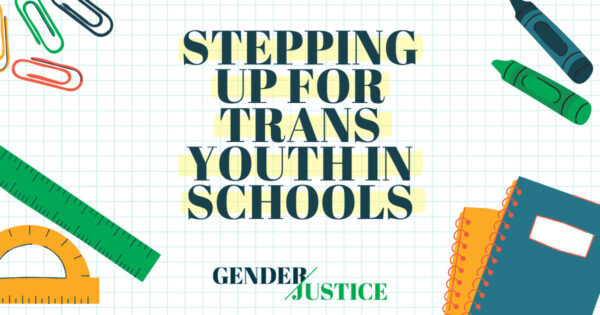Bathroom Safety & Bystander Support: Responding to Anti-Trans Harassment
Public bathrooms should be safe for everyone. But for many transgender and gender nonconforming people, they can be sites of harassment or questioning. Whether you’re a person being targeted for harassment or a witness, understanding how to respond in these situations with small actions can make a big difference.
If You’re Harassed or Your Gender Is Questioned
You have a right to be there. You’re not doing anything wrong. In Minnesota, the law protects everyone from discrimination in places of public accommodations, including public bathrooms. The problem is the harassment, not you.
Stay calm (if you can)
Take a breath. Feeling scared, shaken, or angry is normal. If someone is yelling or threatening you, try to leave if it feels safe.
You don’t owe anyone an explanation
Your gender and your right to use the restroom aren’t up for debate. A simple “I’m just using the bathroom like everyone else” is enough. Or say nothing at all. You don’t have to justify or “prove” your gender to anyone.
Look for a way out
Trust your instincts. If you feel unsafe, head to a public or staffed area. Ask someone nearby to walk with you, alert a manager, or talk to security.
Document the incident (when it’s safe)
Note the time, place, and what happened. Include details of what was said or done. This can help if you decide to report the incident later.
Connect with support
Reach out to a friend, an LGBTQ+ support group, or legal resource. In Minnesota or North Dakota, Gender Justice offers legal help.
If You Witness Someone Being Harassed
There’s no need for heroic intervention, just small actions can change the situation.
Distract
Interrupt the interaction without directly confronting the harasser. Ask for directions or where someone got their shoes, start a casual conversation, or create a diversion. Remain in the space and don’t leave the harasser alone with their target.
Delegate
Ask someone to grab a staff member, security, or another bystander to help.
Document
If it’s safe and appropriate, discreetly record or take notes afterwards. Always offer the targeted person any video or notes. Do not post anything online without explicit permission.
Delay
If you couldn’t act in the moment, check-in afterward. Offer to walk with them or help them report it.
Direct
If it feels safe, calmly tell the harasser to stop. A simple “They have a right to be here. Please leave them alone” will work. Try to end the interaction there and avoid getting in a back and forth. Remember, the goal is to keep the targeted person safe, not escalate the situation.
Sources:
Learn more about the topics on this page
Related Content

How Schools and Educators Can Step Up for Trans Youth
In a special Trans Equity Training this fall, special guest speaker Rebecca Allen — a community leader, recent graduate from the University of Minnesota’s Master of Public Affairs Program, and a proud parent of two — shared her research on best practices for schools to support trans and non-binary students.

Three Things to Know About the Landmark Cooper v. USA Powerlifting Win
On October 22, 2025, the Minnesota Supreme Court issued a historic, unanimous decision in Cooper v. USA Powerlifting. This ruling not only powerfully asserted the rights of transgender athletes to fully participate in sports, it explicitly affirmed transgender Minnesotans’ dignity and place in our state. We invited community members to a briefing breaking down this landmark decision and its impact.

Why the ERA Can’t Wait: Voices from the Minnesotans for Equal Rights Coalition
Minnesota has been a North Star for progress. We’ve defended abortion access, protected trans lives, and expanded care when other states did the opposite. But with Trump back in the White House and attacks on equality escalating, we’re seeing how fast progress can be undone.

Milestones of Progress
Our organization has celebrated some big wins over the years and we continue to grow in the ways we harness strategic impact litigation, legislative advocacy, and education to push the law forward when it comes to gender equality. Check out what we’ve accomplished, together.